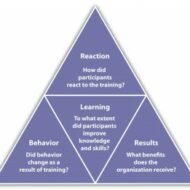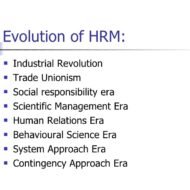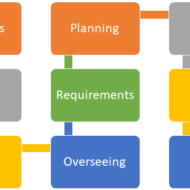Posted by Managementguru in Human Resource, Principles of Management, Project Management, Training & Development
on Mar 22nd, 2014 | 0 comments

Assessment centers Some companies run a series of prolonged selection procedures (assessment centers) each lasting one or two days, and sometimes longer. Usually these are after the first round of interviews and before making the final selection, but they can be used as an initial selection process. They are usually held either on company premises or in a nearby hotel, and are measured by many employers to be the fairest and most accurate method of selecting staff. This is because they give a number of different selectors a chance to see you over a longer period of time than is possible with a single interview, and the chance to see what you can do, rather than what you say you can do, in a variety of situations. Assessment Centers typically include a number of elements. Social/informal events, where you get a chance to meet variety of people, including other candidates, the selectors, recent graduates and senior management. This is an excellent opportunity for you to find out more about the organization and to ask questions in a more informal or social setting. Information sessions, which provide more details about the organization and the roles available. Listen carefully, as it is likely to be more up-to date than your previous research. If you are unclear about anything, ask. It is often good to have a question prepared for these sessions, but make sure it is a sensible question and not one that has already been covered. Asking inappropriate questions just to get noticed does not impress the selectors. Tests and exercises designed to exhibit your potential. Selectors at assessment centers measure you against a set of competencies, and each exercise is carefully designed to assess one or more of these areas. Do not worry if you think that you have performed badly at any stage; it is more than likely that you will have the chance to compensate later on. It is also worth remembering that you are being assessed against these competencies and not against the other candidates, so rather than trying to compete against them, make sure that you demonstrate the qualities the organization is looking for. Remember that assessment centers are extremely expensive to run and that you have already come a long way to be invited – you may have as much as a one in six chance of being selected. Vestibule Training Vestibule training creates a miniature of the department for which the training program is carried on. It utilizes machinery similar to that in operation on the production floor. Qualified instructors, usually highly skilled operators or supervisors, are provided to conduct the program in this special section. Here the new employees are given a course of training in the particular machines they will be required to use and on the exact work they will do when they become a part of the regular production force. {In the early 1800s, factory schools were created, due to the industrial revolution, in which workers were trained in classrooms within the factory walls. The apprentice system was inadequate due to the number of learners that had to be trained as the machines of the Industrial Revolution increased the ability of the factory to produce goods. The factory owners needed trained workers quickly because there was a large demand for the produced goods. Towards the end of the 1800s, a method that combined the benefits of the classroom with the benefits of on-the-job training, called vestibule training, became a popular form of training. The classroom was located as close as conditions allowed to the department for which the workers were being trained. It was furnished with the same machines...

Posted by Managementguru in Human Resource, Labor Management, Organisational behaviour, Principles of Management, Training & Development
on Mar 18th, 2014 | 0 comments

Evolution and Growth of Human Resource Management It is very interesting to trace out the evolution and growth of Human Resource Management. People – The Principal Resource The principal resource of any organization is people and managing people is the most important and challenging aspect of an organization. What we call human resource management today, dates back to 1800 b.c.,which is evident from the inscriptions of Babylonian code of Hammurabi and Kautilya’s Arthasashtra, which explains in detail the importance of selection, incentives, performance evaluation, quality of a manager and wage rates. So,we understand that the concept of managing people has existed even in the previous eras through ancient literature and philosophy. India, China and Greece have been the origin points of human resource management concepts. Evolution of Human Resource Management Industrial Revolution Till, 1930’s, there was no such department called “personnel management” that was considered necessary to cater to the needs and welfare of the labor society. The factory manager was acting as a link between the workers and the management, and most of the time he had to comply with the rules of the management to satisfy them, even if it were against the welfare of the workers. Also proper attention was not given to areas like, worker safety, security and living conditions. Industrial revolution saw mass exodus of workers to urban areas in search of jobs. Need for Employment Department Application of science and technology in production made the rich owners even richer; the poor workers were not paid adequately and their life became miserable. Since the owners lost direct contact with the employees, managers came into the picture to take over control of production and administration. Machines ruled the industry and importance of labor got reduced. This condition existed for sometime until the advent of new and improved management concepts by people like F.W.Taylor who is considered to be the father of scientific management and B.F.Goodrich who was instrumental in forming the “employment department” which can be considered the fore runner of present human resource department. Introduction of Scientific Management Scientific methods were introduced to make the workers perform the job with ease and perfection. It also saved enormous time and reduced the monotony of work. job-designs, job-specification, training and development and human relations were given due importance and the owners slowly started realizing the importance of labor. Through 1940’s to 1970’s behavioral approach was applied to professional management, the major architects being Abraham Maslow, Herzberg and Douglas McGregor. This approach suggested managers to modify their leadership styles to suit the type of followers and motivate the workers. Consequences of World War I and II World War I and II also had profound influence on Human resource development. The concepts of role playing, improved training methods, supervision and group discussions came into the fray. The advent of labor unions also established a clear pathway for the workers to claim their rights, ably supported by the labor laws enacted by various governments. International labor organization was formed in 1919 which created sensation in the worker community all over the world. All said and done, empowerment of workers has been achieved only in developed nations where “job security” is no more a great concern because job opportunities are more. But in unorganized and small sectors, employers continue to exploit workers because “supply” is more than “demand”. The responsibility to develop and empower the employees solely lies on the shoulders of human resource department. It should try to address the problems of workers to the management and amicably settle issues relating to wages, welfare, safety and security. → Objectives and Functions of...

Posted by Managementguru in Operations Management, Project Management
on Feb 24th, 2014 | 0 comments

Significance of Operations Management: Business firms need to formulate brilliant operations strategies in order to survive in the market for long. Focus on finance and marketing alone is not sufficient to compete in the global market. The emergence of innovative products and processes from leading companies in different parts of the world is a clear-cut evidence to prove the significance of operations function. Operations management is gaining importance, thanks to public awareness on quality and its applicability in service operations too. Advent of Industrial Revolution: Until the advent of machinery, each and every nation was dependent on agriculture, which was the prime economic activity. After the industrial revolution of the eighteenth century, mechanization in a large scale converted agricultural economy to an industrial economy. Slowly scientific principles were introduced into production activities to make it more systematic and thus “Production Management” evolved. Now service operations have also gained momentum and since the concepts and techniques of production management are applicable to service operations too, it is rightly called as “Operations Management.” Operations management functions at three different levels. Strategic levelTactical levelOperational level Strategic level: At the strategic level, the operations manager must have a long term vision, as to shape up the company’s success in the light of strategic decisions taken, with the approval of the top management. His area of concern would be, New product developmentNew process developmentProduct re-designProcess re-designProcess layoutProduct layoutFacility locationAggregate capacity planningPlanning co-ordination with finance and marketing departments Tactical level: At the tactical level, the operations manager is concerned about the planning and scheduling operations of the desired output. His area of concern would be: Designing a suitable inventory systemPlan for the work force and train them effectivelyQuality control systemMaintenance andReliability assurance system. Operational level: At the operational level, the job of the operations manager is to accomplish the “set targets”, by performing various coordinating and controlling functions. His area of concern would be: Ordering materials at the right timeScheduling productionScheduling workers as per production requirementControlling quality of goods and services producedFollow up of various schedules for proper implementationMaintaining and updating equipment and system reliabilityOn the job skill development of workers, etc. These functions are by no means exhaustive, but only indicative. The process of planning and control operations is not done in water tight compartments, but are interactive and integrative feeding on one another and also aligned in line with the overall corporate objectives. The strategies are evolved for the purpose of efficient utilization of the available resources as well as to predict the changes in the external business environment that calls for suitable action to limit their impact on the goals of the organization, in terms of cost, quality and...

Posted by Managementguru in Business Management, Human Resource, Principles of Management
on Feb 15th, 2014 | 0 comments

It all began with ADAM SMITH (1776), the Scottish economist when he lashed out against the abuses of monopoly and mercantilism. He highlighted that productivity was a result of specialization, division of work and exchange. We witness the evidence of managerial practices right from the Sumerian age as early as 5000 B.C., from their written records to administer the governmental and commercial activities. Koutilys’a ARTHASASTHRA and Thiruvalluvar’s THIRUKKURAL have spelt out management principles in a coherent way that suits any time period. MILESTONES IN THE DEVELOPMENT OF MANAGEMENT THOUGHT: 5000 B.C SUMERIANS RECORD KEEPING 4000 B.C EGYPTIANS PLANNING,ORGANISING AND CONTROLLING 500 B.C GREEKS SPECIALISATION 1800 ELI WHITNEY MASS PRODUCTION MADE POSSIBLE 1822 CHARLES BABBAGE PRODUCED DIFFERENCE MACHINE,A FORERUNNER OF TODAY’S COMPUTER 1911 F.W.TAYLOR SCIENTIFIC MANAGEMENT 1916 HENRI FAYOL MANAGEMENT FUNCTIONS 1943 ABRAHAM MASLOW MOTIVATION MODEL 1954 PETER DRUCKER POPULARISED MBO-MANAGEMENT BY OBJECTIVES 1961 RENSIS LIKERT CONTINGENCY LEADERSHIP PRE-SCIENTIFIC MANAGEMENT SCHOOL Management is as old as civilization and it is a separate entity by itself. The full boom of management was witnessed with the advent of INDUSTRIAL REVOLUTION in Europe in the late 18th century. There was mass exodus of people to urban cities in search of jobs due to mechanisation and there arose a necessity to manage people. Initially they were treated as slaves by the owners but later the link factor called “Managers” came into the picture to negotiate and solve issues between the union and management. Important contributors to the management theories Robert Owen: He introduced a system of open rating for workers’ work on a daily basis. He insisted that improving the lives of the working individuals through labor welfare measures was the only way to increase productivity. Charles Babbage: He was a visionary who could foresee scientific management. His difference engine or the modern day computer has made people’s lives easy and has replaced manual operations with machines. Captain Henry Metcalfe: He formed the Bureau of Personal Administration in New York Introduced time cards and material cards Fredrick Winslow Taylor: Founder of scientific management and is called the “Father of scientific management.” He emphasized on the need for management planning and standardization of tools and materials, the former to gauge the capability of men and machine and the latter to save time and increase productivity. He was one of the founders of “Time and Motion study.” His theory was based on the following assumptions: · Production planning and control is the main function of an organization · Insisted on functional foremanship · Time study as the basis for arriving standard time · Standardisation of all tools and parts · The use of ‘slide-rules’ and similar time saving implements · Inroduced ‘time-cards’ for workmen · The ‘differential rate system of wages Henry Gantt: He proposed the Gantt Chart, a visual method to compare production output with time it took to complete a task. This is considered to be a forerunner of today’s PERT-PROGRAMME EVALUATION and REVIEW TECHNIQUE). He also developed · Work quota systems · Bonus systems for workers or managers Objectives of Scientific Management · To ensure continuous employment opportunities for the work force · To gauge market tendencies · To render workers a high standard of living; this motivates them to contribute more · To increase the income of the workers · To assure a socially agreeable condition of working environment · Proper selection, training, assignment, transfer and promotion of workers · To develop self-confidence and self-respect among workers through opportunity and participation · To promote justice through elimination of discrimination in wage-rates · To eliminate causes of friction and to promote understanding, tolerance and the spirit of team-work-Espirit de...








